Colour Management Buyers Guide
In everyday life, colour management isn’t an issue that touches most people. We switch on our tablet, laptop or desktop computers and, thanks to the hard work of colour scientists and engineers, accept that what appears on the screen in front of us is an acceptable representation of the real world. But for imaging professionals (video editors, digital prepress, photographers, colourists and VFX/Graphic Artists) engaged in colour critical work, the potential world of workflow woe appears at every turn. Not all monitors are created equally. With standard computer monitors, subtle colour casts can multiply across space and time with unwanted surprises. Out in the field or in post, working alone or as part of a globally dispersed team, everyone needs to see exactly the same image characteristics every time.

Don’t panic! Help is here. We’ll talk you through the various tech on offer and discuss features such as bit depth, colour accuracy and HDR to demystify what’s best suited to various production/post activities. Choosing the correct type of display will have a major impact on your work.
Cine vs Photo

Stop fighting with your monitor. Why waste valuable time correcting for the inherent colour casts and foibles of your screen? For mission critical colour and black, it’s the right tool for the job. Without a professional reference monitor you can’t be 100% confident about your colour decisions. This is the Mastering Tool of the visual arts. Colour workflow begins and ends with your ability to judge your images accurately.
LED Backlight LCD Displays
First, let’s talk about the various panel technologies on offer - VPN, TN, IPS – all occupy a space in the market appropriate to their cost and performance. A common trait of LCD monitors is the fluctuation in brightness and colour across different parts of the screen. In the past this made LCD a poor choice for imaging professionals. The extra engineering required to minimize these effects is reflected in the higher cost of professional grade monitors. Due to their low cost, TN (Twisted Nematic) monitors are the most common displays on the market. Screen flicker may have been consigned to the recycle bin of history, but unfortunately TN’s limited colour depth causes banding and posterisation and the slightest off-centre viewing can cause severe colour shifts. For these reasons TN displays are not recommended for use in conjunction with professional NLE systems employed in a colour critical workflow. A more suitable display technology for photo and video is IPS.
IPS Professional Monitors
IPS (In-plane Switching) panel technology was initially created to improve the weak viewing angles of TN panels and to further improve colour reproduction and image quality. An IPS display offers viewing angles of 178-degrees horizontal and vertical and is significantly less likely to exhibit any colour or contrast shifts when viewed from off-centre , and fast grey-to-grey response times ensures crisp yet fluid video playback.
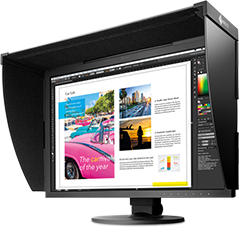
Eizo ColorEdge CG2420
HD non HDR
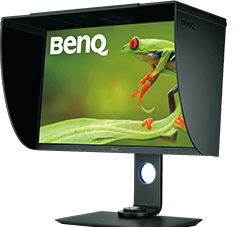
BenQ SW271 4K
4K non HDR

Eizo ColorEdge CG319X
4K HDR
Colour Space & Bit Depth Precision
sRGB (Standard Red Green Blue) is a colour space commonly used in display technology, but is only one example of a standardised use of the RGB colour model.
By defining the three Red, Green and Blue primary colour xy coordinates on the reference space CIE chromaticity diagram (see below), a triangular “footprint” within the spectral locus is generated. The space contained within the triangle represents a 2D slice of the three dimensional digital palette of available or realisable colour combinations, including black and white points. Referred to as the panel’s gamut, this is the range of colours a display is capable of reproducing which may, or may not, include all the colours defined by a specific colour space. Colours that can’t be displayed are said to be “out of gamut”. A percentage of the colour space(s) covered is usually included in the display specification and is a useful marker of their colour accuracy.
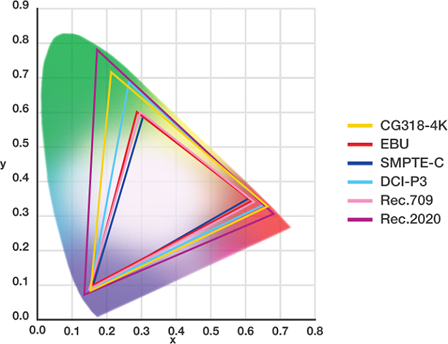
Yxy-CIE Chromacity Diagram above shows the values for the gamuts most often associated with post-production. The horse shoe shape is called the spectral locus and represents the entire range of perceptible colour. © Eizo 2015
Bit depth relates to the total number of discrete grey scale tones a display is capable of reproducing. Each pixel (picture element) contains 3 sub-pixels assigned to the primary colours - Red, Green and Blue. Bit precision therefore has a direct correlation to the digital palette of colours available and the ability to render smooth gradients without ugly tone jumps. Most professional monitors use an 8-bit panel, which equals 256 (28) steps between the deepest achievable black level and the highest white point, producing, when multiplied by each RGB sub-pixel, an array of Approx.16.77 million colours (256 x 256 x 256 = 16,777,216). Because the three sub-pixels are used to calculate bit precision, 24-bit is the technically correct term to use when discussing 8-bit technology. With a baseline of 100% sRGB and true 8-bit colour depth, the target audiences of professional general-purpose IPS panels are consumers, enthusiasts and business users who are more appreciative of the improved overall image quality, colour accuracy and wider viewing angles.
For professional users engaging in colour critical projects however, an even higher standard of colour accuracy from a reference monitor is required, and high-end wide gamut 10-bit displays (210) with support for colour spaces such as Adobe RGB, P3 and Rec. 2020 are employed in photography, prepress and post-production. It may not sound like much, but 10-bit precision makes a vast difference to image quality, achieving 1024 grey scale increments for a total of 1.07 billion colours, 64 times as many colours as you get with 8-bit display, resulting in even smoother colour gradations on screen.
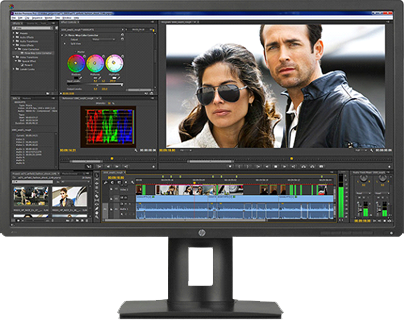
Unfortunately you can't just plug a deep colour 10-bit display in to your system and ta-dah! expect ugly colour banding to vanish. Your operating system, GPU (or Video I/O Device), GPU drivers and application software need to support 10-bit output. The connection between monitor and PC is also important. If you have a DVI connection you are limited to 8-bit. DisplayPort and HDMI 1.3 support 10-bit colour, and Windows 7 and later operating systems offer 10-bit support. Apple recently included limited support for 10-bit output on some of its own displays (e.g. Retina 4K & 5K iMac) on OSX El Capitan. For GPUs, both NVIDIA Quadro and AMD FirePro graphics cards support 10-bit (30-bit) output.
Post-production editorial is changing. With more and more editors and producers performing colour correction and grading on high resolution, HDR, log or RAW media, the requirement for high-end 10-bit monitors is growing beyond the needs of dedicated grading facilities.
Calibration
In a video pipeline our recommendation for a Reference Monitor is a 10-bit hardware calibrated IPS display with near total coverage of the target working colour space, 27" or larger with a resolution equal or greater than your working NLE timeline resolution. For a GUI Display we recommend a professional 8-bit IPS monitor with a gamut that covers a minimum 100% sRGB, 24” or larger with 1920x1080 or higher resolution. 3840 x 2160 allows the greatest screen space for tools and windows.
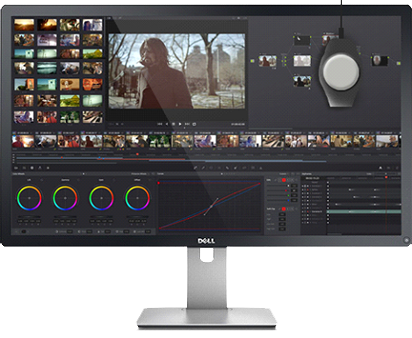
Whichever level of panel you choose, with daily use the characteristics of all monitors drift over time. These subtle shifts in colour temperature and brightness mean regular calibration is required. Scan offer a range of sensors and software from X-Rite, Datacolor and SpectaCal to help maintain a consistent colour managed workflow. While general purpose IPS monitors will benefit from regular software calibration, professional users should choose a monitor that supports internal hardware calibration.
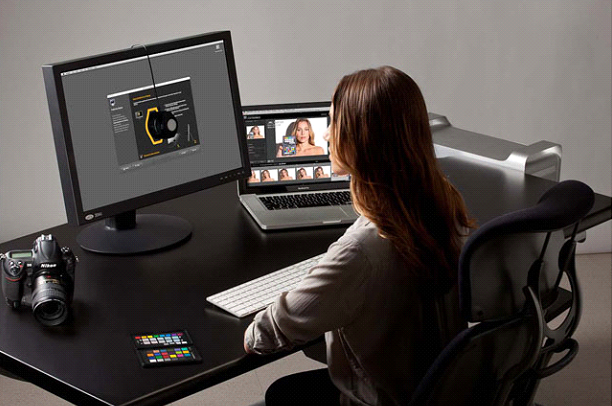
Probes and calibration software can be used to ensure your monitor is within specification. Calibration software will output coloured patches to your monitor which the probe will then monitor and examine to determine and calculate what adjustments need to be made to represent colours accurately. Provided that the monitor can be manually calibrated the calibration software will advise you on what needs changing. Alternatively, they can create LUTs (Lookup tables) that are then applied to the I/O device output to bring the signal inline.

X-Rite i1Basic Pro
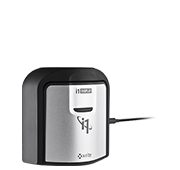
X-Rite i1Display Pro
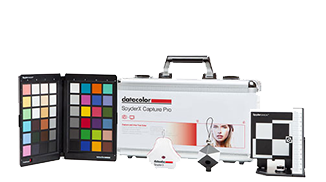
Datacolor SpyderX Capture Pro
Controlling the viewing environment
Last but by no means least, don’t ignore your viewing environment. It is probably the weakest link in the colour management ecosystem. If you don’t have access to grading suite conditions, the next best thing is to minimize all strong light sources and position any remaining ambient light out of your line of sight. Turn off all main overhead lighting. If the space has windows, close blinds and curtains and don’t allow any reflections or glares from ambient lighting to fall on the screen. A monitor hood is a useful tool in this respect, as it masks the screen from stray ambient light. Light sources that give out an uneven light can pollute the colours you are viewing. Lights with a high CRI rating are recommended as they should produce a more even light helping to avoid alter your visual perception of your content.
Whilst it may seem like we are being fussy alternative light sources can affect your perception of an image. As a very basic example, if there is a light source that is warmer polluting your perception of the image, you may lean towards a cooler colour temperature during the grade. If you were then to view this back in a room with a cooler light source, your image may appear too blue.
For professional viewing environments, even the paint or wall coverings can affect how you perceive an image. In high end facilities it is common place to paint the walls a neutral 18% grey. In the same way that shooting a grey card during production helps when balancing your image, the same mindset can help you achieve the best quality output.
Before you make any colour decisions, allow your monitor to warm up for at least 30 minutes and give your eyes time to adjust to the controlled environmental conditions.
Pro Video #LifeHacks
A monitor used for graphics and video in a colour managed workflow should be calibrated at least once every 200–300 hours (in ordinary use, once per month). Re-calibrate after moving the monitor or if there’s a significant change in the ambient lighting, as the monitor profile generated takes this factor into consideration.
In strong lighting, especially outdoors, always use a monitor hood. In the same way that Flags are employed to create negative fill in lighting set-ups, wear dark clothing when using a monitor out in the field; the screen will reflect your chest and display more contrast.
HDR
What is HDR and why does it matter?
HDR or High Dynamic Range refers to the number of stops between the darkest black and the brightest white. Human vision is capable of viewing roughly 20 stops whilst SDR (Standard Dynamic Range) displays show around 6 stops. Newer HDR displays can be capable of displaying up to 13 stops. This doubling of dynamic range greatly increases the detail we can see in both shadows and highlights.
HDR displays are generally measured by how many Nits or Candela Per Square Metre (cd/m2) they can display. SDR displays all tend to have a maximum brightness of 100 nits. HDR displays however, can display up to 4000 nits, with the HDR specification defining all the way to 10,000 nits!
If you wish to work in and deliver an HDR project you will need a display that supports an HDR standard. After all, just like colour management, you have to be able to view your content correctly to know that your delivery is up to scratch!
As HDR continues to grow and develop more manufacturers are producing HDR capable displays. Scan stocks a variety of HDR displays from manufacturers like Eizo and ASUS as well as HDR capable I/O devices from AJA and Blackmagic Design.
Whatever your HDR needs Scan can help you develop and implement a workflow that suits you!
The best colour managed monitors
There you have it, everything you need to know when choosing a colour managed monitor. We hope you've found this buyers guide helpful. Don't hesitate to contact one of our friendly advisors for more advice if you still have questions on how to select the perfect colour managed monitor. If you’re all set to go we recommend checking out the colour managed monitors from these top brands.
VIEW RANGE